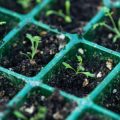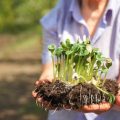Understanding Your Fall Garden Zone
When it comes to early fall garden prep, getting familiar with your garden’s hardiness zone is the first step to success. The U.S. is divided into USDA Plant Hardiness Zones, which help gardeners determine what plants will thrive in their area and when to plant them. In September, knowing your zone helps you select vegetables, herbs, and ornamentals that can handle cooling temperatures and shorter days. Weather patterns vary widely across the country: while the Pacific Northwest might enjoy mild, damp Septembers, gardeners in the Midwest or Northeast may already be watching for an early frost. Meanwhile, Southern states often still experience summer-like heat. To maximize your fall harvest, check your local average first frost date—this critical detail tells you how much time you have left for planting and pruning before cold snaps set in. Planning ahead by understanding your region’s climate quirks and frost schedule makes all the difference in building a resilient, productive fall garden.
2. Selecting the Right Crops for September Planting
As summer winds down and the first hints of autumn creep into the air, September is prime time for early fall garden prep. Choosing the right crops to sow or transplant now will set your garden up for a bountiful late-season harvest and healthy growth as temperatures cool. In most regions across the U.S., early fall is all about quick-growing and cold-tolerant varieties—plants that can handle shorter days and chilly nights.
Top Veggies for Early Fall Sowing
Focus on vegetables that mature quickly or are known for their frost resistance. Here’s a handy table to guide your selection:
| Vegetable | Days to Harvest | Notable Features |
|---|---|---|
| Spinach | 30-45 | Thrives in cool temps; sweetens after light frost |
| Radishes | 20-30 | Super-fast; multiple successions possible |
| Kale | 40-60 | Tolerates frost well; flavor improves with chill |
| Lettuce (leaf) | 25-35 | Quick harvest; prefers cooler weather |
| Carrots (short varieties) | 55-70 | Crisp roots if sown now for late fall harvest |
| Beets | 50-60 | Tops and roots both edible; robust in autumn gardens |
| Bok Choy / Pak Choi | 30-45 | Matures quickly; great for stir-fries & soups |
Herbs That Shine in the Early Fall Garden
If you love cooking with fresh herbs, don’t overlook these cool-weather champions:
- Cilantro: Prefers cooler soil and is less likely to bolt in autumn.
- Dill: Quick to sprout and offers fragrant foliage.
- Chives: Hardy perennials that can be divided and transplanted now.
Flowers for Fall Color & Pollinator Support
Add pops of color and help local pollinators by sowing or transplanting flowers that thrive in early fall:
- Pansies & Violas: Cold-hardy, bloom through mild frosts.
- Alyssum: Sweet scent, attracts beneficial insects.
- Calendula (Pot Marigold): Prolific bloomer until hard frost, petals are edible too!
Quick Tips for Success:
- Sow seeds a little deeper than in spring—they’ll stay moist longer as the topsoil dries out faster this time of year.
- If transplanting, choose healthy starts and water them well after planting.
- Add a layer of mulch to insulate roots against sudden temperature swings.
Remember:
The secret to a thriving early fall garden is matching your crop choices to your USDA Hardiness Zone and keeping an eye on average first frost dates. With the right selection and timing, your garden will keep producing crisp greens, root veggies, and vibrant blooms well into autumn.

3. Soil Prep and Amendment Tips for Fall Success
Getting your soil in shape is the backbone of a productive fall garden. As summer crops wind down, start by clearing out any spent plants, weeds, and debris—don’t forget to pull out the roots to avoid unwanted volunteers next season. Once your beds are clear, it’s time to boost fertility and structure. In early September, work 1-2 inches of well-aged compost into the top six inches of soil using a garden fork or broadfork. Compost gives your fall veggies steady nutrients while improving drainage and water-holding capacity, both crucial as rainfall patterns change.
If you’re looking to really step up your game, consider planting a quick-growing cover crop like crimson clover or winter rye in any empty beds you won’t be using right away. These “green manures” suppress weeds, add organic matter, and help loosen compacted soils over the winter—just be sure to mow them down before they set seed in spring. For raised beds or heavy clay soils, mix in some bagged garden soil or leaf mold to lighten things up.
Finish prep by raking the surface smooth and giving the beds a good soak a day before planting. This encourages strong root establishment for new transplants and seeded crops alike. Taking these practical steps now means your September plantings will have the healthy foundation they need to thrive all season long.
4. Essential Pruning Techniques for September
September is the ideal time to tackle pruning tasks that set your garden up for a healthy fall and winter. Focus on cleaning up summer crops, prepping perennials, and maintaining fruit trees and shrubs. Proper pruning now helps reduce disease risk and encourages strong regrowth when temperatures cool down.
Pruning Summer Crops
As summer vegetables like tomatoes, peppers, and cucumbers wind down, remove any dead or diseased foliage. This prevents fungal problems from lingering in your garden beds over the colder months. Trim back spent vines and compost healthy plant matter. For tomatoes, cut back indeterminate varieties by a third to encourage remaining fruit to ripen.
Prepping Perennials
Cutting back perennials in early fall helps them conserve energy for winter dormancy and reduces hiding spots for pests. Remove faded blooms (a process called deadheading) and trim stems down to just above the crown. Avoid cutting spring-blooming perennials, as this may reduce next year’s flowers.
Fruit Trees and Shrubs
For fruit trees, remove water sprouts (the vertical shoots on branches), suckers from the base, and any crossing or diseased branches. Light shaping is fine, but avoid heavy pruning now—save that for late winter or early spring to prevent stress. For berry bushes and ornamental shrubs, prune out dead canes and thin crowded areas to improve air flow.
Quick Reference: What to Prune in September
| Plant Type | What to Prune | Why Prune Now? |
|---|---|---|
| Summer Crops (Tomatoes, Peppers) | Dead/diseased leaves, spent stems | Reduces disease; supports last harvests |
| Perennials (Coneflowers, Black-eyed Susans) | Faded blooms; trim stems above crown | Aids overwintering; tidies beds |
| Fruit Trees (Apples, Pears) | Suckers, water sprouts, dead/crossed branches | Improves structure; controls pests/disease |
| Shrubs & Berries (Blueberries, Hydrangeas) | Dead canes; thin crowded areas | Increases air flow; prevents rot/mold |
Pro Tips for Healthier Plants:
- Sterilize pruners between plants to prevent disease spread.
- Avoid pruning on wet days to keep fungi at bay.
- Add trimmed healthy material to compost; discard anything diseased.
- If unsure about timing for specific plants, check local extension service guides.
With these essential September pruning steps, you’ll keep your garden healthier through fall and beyond.
5. Watering and Mulching Strategies
As September rolls in and early fall weather settles over your garden, its time to rethink your watering habits and mulching approach. With shorter days and cooler nights, plants water needs start shifting compared to the heat of summer. Smart gardeners know that a strategic watering schedule not only conserves resources but also sets the stage for robust root development and strong fall crops.
Adjusting Your Watering Schedule
In most parts of the U.S., early fall means less evaporation, so you can cut back on watering frequency. Focus on deep, infrequent soakings instead of daily sprinkles—this encourages roots to grow deeper, making plants more resilient to temperature swings. Early mornings are still the best time to water; this minimizes evaporation and gives foliage plenty of time to dry before nightfall, helping prevent fungal diseases.
Keep an Eye on Soil Moisture
Dont just rely on the calendar—check your soil regularly by sticking your finger an inch or two below the surface. If it feels dry at that depth, its time to water. Raised beds may dry out quicker than in-ground plots, so monitor them closely as temperatures fluctuate.
The Power of Mulch
Mulching is your secret weapon for moisture retention as the air cools down and winds pick up. Spread a two- to three-inch layer of organic mulch—like shredded leaves, straw, or bark chips—around your veggies and perennials. This insulates roots against chilly nights while holding precious moisture in the soil. As a bonus, mulch helps suppress weeds and gradually breaks down into rich organic matter.
Timing Your Mulch Application
If you haven’t refreshed your mulch since summer, early fall is the perfect time. Be sure to keep mulch a couple of inches away from plant stems to prevent rot and pest issues. For new plantings or areas you’ve just pruned, mulching immediately after watering locks in moisture right where it’s needed most.
Tip: Use What You Have
This season, don’t overlook what’s on hand—shredded autumn leaves make excellent (and free) mulch. Just be sure they’re disease-free before spreading them in your beds.
With thoughtful watering routines and a fresh layer of mulch, your early fall garden will stay hydrated, healthy, and better equipped for the changing season ahead.
6. Pest and Disease Watch: Early Fall Edition
As September rolls in, the shift in temperature and lingering humidity can open the door for a fresh wave of garden pests and diseases. Staying vigilant is key to keeping your fall crops healthy and productive. Make it a habit to walk your garden every few days with a keen eye—look under leaves, inspect stems, and check soil surfaces for early signs of trouble. Common culprits this time of year include aphids, cabbage loopers, powdery mildew, and downy mildew.
Monitoring Methods That Work
Use yellow sticky traps to catch flying insects like whiteflies and fungus gnats before they become widespread. Handpick caterpillars or beetles early in the morning when they’re most active. Consider using a magnifying glass for close inspections, especially on the undersides of leaves where pests often hide or lay eggs.
Organic Controls for a Healthy Garden
If you spot pests or disease symptoms, reach for organic solutions first. Neem oil sprays and insecticidal soap are effective against soft-bodied insects without harming pollinators. For fungal issues like powdery mildew, mix up a homemade spray with baking soda and water or use commercial organic fungicides containing copper or sulfur. Encourage natural predators—like ladybugs and lacewings—by planting pollinator-friendly flowers nearby.
Prevention Is Better Than Cure
Remember, many fall problems can be prevented by good cultural practices: water at the base of plants to keep foliage dry, space crops properly for airflow, and promptly remove diseased leaves or plants from your garden beds. By keeping a watchful eye and taking prompt, organic action, you’ll give your September plantings their best shot at thriving through the season.
7. Extending Your Harvest into Late Fall
As September rolls in and temperatures begin to dip, smart gardeners know the season doesn’t have to end with the first frost. With a few practical strategies, you can stretch your garden’s productivity well into late fall. Here are some tried-and-true methods to keep those fresh veggies coming.
Utilizing Row Covers for Frost Protection
Row covers are a simple, effective way to shield your crops from chilly nights and unexpected cold snaps. Lightweight fabric row covers can add several degrees of warmth while still letting in light and rain. Just drape them over hoops or directly onto plants like lettuce, spinach, or beets—secure the edges with soil or landscape pins. Come morning, uncover on warmer days to prevent overheating. This method is especially useful for extending the life of tender greens and root crops.
Cold Frames: Your Backyard Mini-Greenhouse
If you’re looking for something sturdier, consider building or buying a cold frame. These handy structures—basically boxes with clear lids—trap solar heat during the day and protect plants from nighttime chills. Place cold frames over beds sown with fall crops like kale, carrots, or radishes. On sunny days, prop open the lid slightly for ventilation to avoid cooking your crops. With a little attention, cold frames can keep harvests going even after hard frosts.
Succession Planting for Continuous Crops
Don’t let empty spaces go to waste! As you pull out spent summer vegetables, replant fast-maturing varieties such as arugula, spinach, or turnips. Succession planting—sowing new seeds every couple of weeks—ensures a steady supply of produce right up until winter truly sets in. Pay attention to each crop’s “days to maturity” and count backward from your area’s average first frost date; this helps you time your plantings just right for a late fall harvest.
Keep an Eye on the Weather
No matter which method you use, always stay tuned into local forecasts. Quick action with row covers or closing up cold frames on chilly nights can make all the difference between a bumper crop and frost damage.
Harvest Smart: Pick Often and Early
As daylight shortens and temps drop, growth slows down. Check your garden frequently and pick crops while they’re young and tender—this encourages more production and guards against sudden frosts spoiling your efforts.
With these practical tools and timing tips, September doesn’t have to signal the end of your gardening adventure. Embrace early fall prep and watch your backyard bounty last longer than you might expect!


